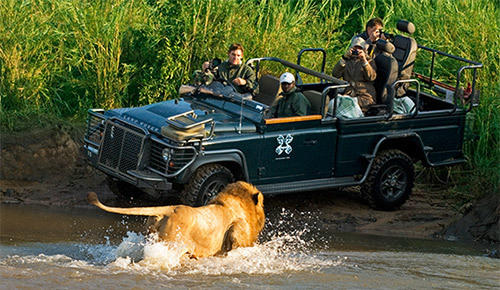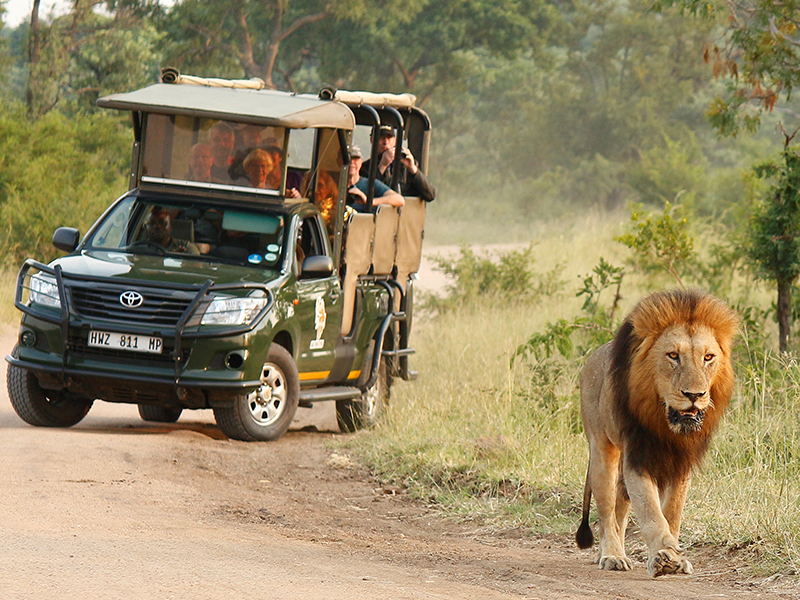Discover the Ultimate Wildlife Encounters on Kruger Park Safaris
Discover the Ultimate Wildlife Encounters on Kruger Park Safaris
Blog Article
Exploring the Majestic Wildlife and Scenic Landscapes of Kruger Park Safaris: An Extraordinary Experience Awaits
Kruger Park, a keystone of South Africa's natural heritage, uses an intricate tapestry of wild animals and spectacular landscapes, inviting exploration and involvement with its diverse ecosystems. As site visitors venture right into this large refuge, they encounter not only the iconic Huge 5 yet also a riches of various other varieties that enrich the park's biodiversity.
Review of Kruger Park
Among South Africa's biggest and most popular video game gets, Kruger National Park spans around 19,485 square kilometers in the northeastern area of the nation. Developed in 1898, it is a keystone of preservation initiatives, showcasing varied ecological communities that consist of savannas, forests, and riverine woodlands. The park is home to an impressive range of wild animals, with over 500 bird species and various mammals, reptiles, and plants, making it a biodiversity hotspot.
Kruger National forest is separated right into numerous areas, each offering unique landscapes and habitats, thus enhancing wild animals checking out opportunities. Site visitors can discover the park through self-drive paths or directed safaris, enabling an immersive experience in nature. The park's facilities consists of well-kept roads, rest camps, and picnic locations, making certain accessibility for all sorts of travelers.
Furthermore, Kruger National forest plays a pivotal role in education and study, adding to international conservation initiatives. The park's dedication to lasting tourism promotes liable wildlife watching, cultivating a deeper admiration for South Africa's all-natural heritage. With its spectacular scenery and rich biodiversity, Kruger National forest continues to be a premier destination for adventure candidates and nature fanatics alike.
The Big Five Experience
Kruger National Park is renowned for supplying visitors the opportunity to come across the iconic Big Five, which consists of the lion, leopard, elephant, buffalo, and rhinoceros. This unique possibility to observe these magnificent animals in their all-natural environment attracts wild animals lovers and adventure seekers from around the world.
The excitement of identifying the Large Five is not simply concerning the pets themselves however additionally the context of their setting. Each safari provides a new experience, as overviews share insights into the actions, habitats, and preservation initiatives surrounding these varieties. The elusive leopard, usually seen resting in the trees, showcases the beauty of dexterity and stealth, while the enforcing elephant herd highlights the value of social frameworks within wildlife neighborhoods.

The Cape buffalo, known for their unforeseeable nature, adds an element of enjoyment to any kind of safari. This immersive experience fosters a much deeper admiration for wild animals and highlights the relevance of preserving these extraordinary animals for future generations.
Scenic Landscapes and Ecosystems
Frequently celebrated for its spectacular appeal, the landscapes of Kruger National Park offer a varied tapestry of ecological communities that improve the safari experience. Spanning virtually two million hectares, the park is home to a multitude of environments, including savannahs, rivers, wetlands, and timberlands. Each ecological community is distinctively intertwined, creating a dynamic environment that sustains an array of flora and fauna.
The savannahs, identified by substantial meadows dotted with acacia and baobab trees, give perfect grazing premises for herbivores like wildebeests and zebras. On the other hand, the dense forests and thickets offer refuge for predators and smaller types, cultivating a rich biodiversity. The park's waterholes and rivers are lifelines for wild animals, drawing in a plethora of animals, specifically during the dry season.
This detailed interplay of ecological communities not only supports the park's famous wild animals however also presents visitors with magnificent views, from rolling levels to significant rocky outcrops. Whether going across open savannahs or exploring thick bushveld, the picturesque landscapes of Kruger National forest promise to leave an indelible mark on every safari enthusiast's heart.
Ideal Times to Check Out
Comprehending the best times to go to Kruger National Park can substantially boost the safari experience. Kruger park safaris. The park experiences 2 primary periods: the completely dry winter season months from May to September and the wet summertime from October to April. Each period offers distinct benefits for wild animals viewing and landscape recognition
During the dry season, pets gather around water sources, making wildlife spotting more predictable. The vegetation weakens, offering clearer presence for discoveries of the Big 5 and other varieties. This duration is specifically prominent among tourists because of the positive conditions for game drives and led strolls.
Conversely, the wet period, defined by lavish landscapes and Full Report lively vegetation, is excellent for birdwatching enthusiasts. Kruger park safaris. Migratory birds are plentiful, and the park comes to be a haven for different avian varieties. Additionally, this period marks the birth of many young pets, offering an opportunity to witness the interesting characteristics of wild animals interactions
Inevitably, the most effective time to visit relies on personal choices, whether one looks for the ease of wildlife sightings or the charm of a flowering ecosystem. Regardless of the period, Kruger National forest guarantees an unforgettable journey for all who venture right into its wild welcome.
Safari Tips and Guidelines

Consider the time of year when planning your safari. The completely dry period, from May to September, commonly uses far better wildlife viewing possibilities. Wear neutral shades to blend into the environment, and prevent showy or intense outfit that might alarm pets.
Load essentials such as field glasses, a cam, sunscreen, and insect repellent. Remaining hydrated is essential-- lug enough water for your group. Furthermore, be mindful of the park's wild animals; observe from a range and never ever effort to feed or provoke animals, as this see page can modify their natural habits.
Engage with experienced guides, who offer invaluable insights and boost your understanding of the ecosystem. Approach your safari with patience and an open heart, allowing for spontaneous minutes that will certainly develop memorable memories in this spectacular landscape.
Verdict
In final thought, Kruger Park provides an unparalleled opportunity to involve with varied wild animals and awesome landscapes. The park's commitment to conservation and education and learning enhances the safari experience, enabling visitors to appreciate the intricate balance of ecosystems. Experiencing the Big 5 and exploring numerous surfaces promotes a deeper understanding of South Africa's all-natural heritage. With cautious preparation and you can look here adherence to guidelines, a journey in Kruger Park assures to be both enriching and memorable for all who start this trip.
Kruger Park, a foundation of South Africa's all-natural heritage, supplies a detailed tapestry of wildlife and impressive landscapes, inviting exploration and interaction with its varied ecosystems.Kruger National Park is separated right into different areas, each offering special landscapes and environments, thus enhancing wildlife checking out opportunities. The park's rivers and waterholes are lifelines for wildlife, attracting a myriad of animals, specifically throughout the completely dry season.
In addition, be mindful of the park's wild animals; observe from a distance and never ever attempt to feed or provoke animals, as this can change their natural habits.

Report this page